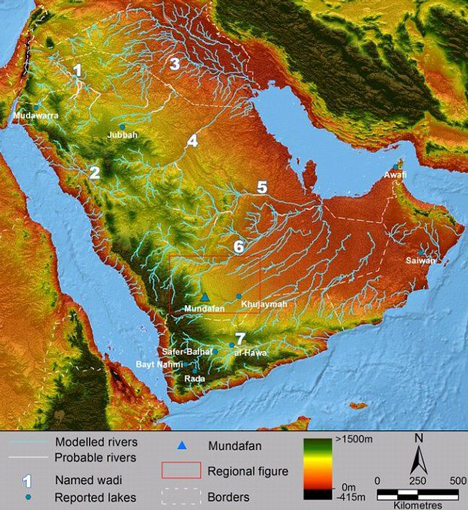A New Look at the Spread of Modern Humans
A team of international scientists from a variety of disciplines have pooled their skills and shed light on the role of the Arabian Peninsula in the migration of our species out of Africa. A migration that was to eventually lead to human beings (Homo sapiens) spreading to every continent on the planet. A consequence of this exodus may have been the extinction of other types of hominins such as the Neanderthals and the Denisovans.
Human Migration
Although the Kingdom of Saudi Arabia is very arid today and much of the country is classified as desert, back in the Pleistocene Epoch, it looked very different. Palaeontologists have been working with archaeologists, cartographers and experts in geochronology helping to map the ancient landscape of the peninsula. It turns out that much of Arabia was once a lush and fertile land teeming with game and with plenty of navigable rivers for our ancestors to exploit.
This the first time, such a group of technical experts have worked together to plot the palaeoenvironment of this part of the world. It seems that the Arabian Peninsula was not just a stopping over point for human migration, but this now largely arid landscape once offered hunter/gatherers rich pickings indeed.
The Spread of Modern Humans
The head of the Saudi Commission for Tourism and National Heritage, Prince Sultan bin Salman bin Abdulaziz explained that this new study suggests that the Arabian Peninsula had human settlements for long periods of time and that it was not just merely a transit point, as was previously thought by many anthropologists and other scientists.
He stated:
“The Arabian Peninsula has witnessed dramatic changes in climate. In the middle Pleistocene this encouraged early man to make for the then-green peninsula as his destination.”
Green Arabia – Scientists Have Identified a Number of Ancient Lakes and River Systems
Picture credit: Crassard et al. 2013
Two Main Human Migration Routes Identified
Two main human migration routes have been identified from Africa to Arabia. The first was a northern route via the Nile Delta into Arabia from what was to become Egypt. The second route is much further south and involved early humans crossing over from the horn of Africa. The multi-disciplinary team have put together a picture of an Arabian environment that has changed much in the last few hundred thousand years. Over 10,000 ancient lakes have been identified including a number in what is now the barren Nafud desert. These findings are supported by fossil evidence as the palaeontologists have found the fossilised remains of hippos, elephants, shellfish and crocodiles.
Although the climate has changed over time, the researchers also identified several settled, stable periods during the Pleistocene when the climate was humid with reliable rainfall.
Visit Everything Dinosaur’s award-winning website: Everything Dinosaur.






